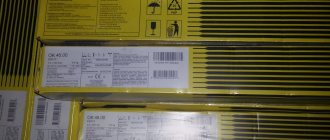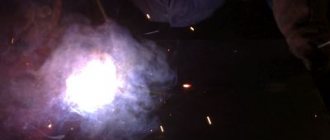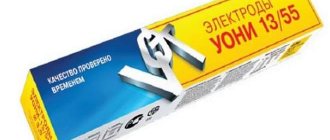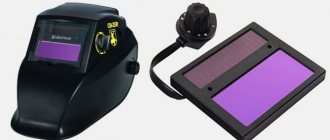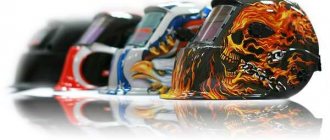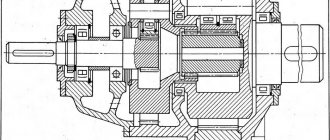Home / Accessories and parts
Back
Reading time: 2 min
0
496
When performing welding work, you can sometimes do without boots or overalls, but it is impossible to weld without a mask; its use is mandatory. A welding mask is used to protect the eyes from inflammation and vision impairment, and the skin from damage.
For such protection, special replaceable filters are used. Their choice is huge, and selection must be made based on work requirements and budgetary possibilities.
You will learn how to choose a protective light filter for welding and what types of filters exist.
- Types of filters Constant-darkening filters
- Variable dimming filters
- Diopter filters
Types of filters by purpose
Depending on the work, different types of filters are used. Glass for a welder's mask comes in several types depending on its purpose.
- Light filters for auxiliary workers during electric welding.
- For working with gas welding and cutting equipment.
- Light filters for electric welders.
For helpers, vision protection is provided by glasses with different shading, inserted into glasses.
When working with gas welding equipment, light filters made of tinted yellow-green glass with C6 shading are also used. They are fitted into safety glasses.
Light filters for working with electric welding have many degrees of protection, both from the bright radiation of the arc and from the ultraviolet and infrared spectra.
An important property of any welder’s protective glass is resistance to mechanical and thermal stress (slag fragments, splashes of molten metal).
Light filters for masks
Light filters and glasses for welding helmets
The main component of a welding helmet is a light filter installed in it to protect the organs of vision from IR and UV radiation of the welding arc. The degree of protection and eye fatigue during operation depend on how correctly its parameters are selected depending on the welding mode used.
Automatic filters and their unique capabilities
The main parameter characterizing the light filter for a welding helmet is the degree of darkness. It determines the degree of limitation of the light flux, the intensity of which depends on the welding method and is indicated in the marking. Designations C-3, C-4, C-5, C-6, C-7, C-8 correspond to shades 8, 9, 10, 11, 12, 13 DIN according to the European classification. When choosing the degree of glass darkening for the welder's mask, the value of the applied welding current is taken into account. For example, when TIG welding it is necessary to use glass with the following shading:
- 15...40A - 9...10 DIN;
- 40...175A - 11...12 DIN;
- 175...250A - 13 DIN.
Modern technical solutions make it possible to avoid selecting a filter for a welding helmet based on the degree of darkness. For this purpose, an automatic light filter is used, which changes its throughput depending on the intensity of the light flux. The principle of its operation is based on blocking polarized light rays with liquid crystal plates. The automatic mask filter consists of a package of optical layers and a cost-effective electrical control circuit with light sensors located at eye level. This design provides stable vision protection during arc burning and constant visual control of the working area without lifting the mask.
The section presents transparent polycarbonate glasses, tinted glasses and glasses for a welder's chameleon mask in various sizes. The offered automatic filters contain:
- smooth adjustment of the degree of darkness from 9 to 13 DIN, which allows use in any welding modes;
- 3-step adjustment of sensor sensitivity for different illumination of the workplace;
- adjustment of the transition delay to the light state from 0.1 - 0.8 s;
- 4 DIN Dimmable Grind Switch.
The reliability of automatic light filters is ensured by combined power supply from lithium batteries and solar cells. All presented products have a wide viewing angle, a high degree of transparency and a complete absence of geometric distortions, are resistant to mechanical stress and have a favorable price.
When choosing and purchasing a light filter, it is necessary to take into account that the higher cost of automatic filters compared to conventional tinted glass is compensated by an increase in the efficiency of welding work and a reduction in visual fatigue. Consultants are ready to assist in choosing the right light filter to create safe and comfortable working conditions.
Why use filters
When welding, the electric arc gives off a very bright glow that simply blinds a person. A flash of light of such intensity can cause burns to the surface of the eye (as welders say, catching a “bunny”), prolonged or frequent repetition of such glare leads to very painful irritation (“sand in the eyes”). If light of such strength constantly affects the cornea, it will lead to complete loss of vision. This is the first reason why protection is used when welding.
Also, without the use of light filters, it is impossible to simply control the welding process, and with sufficient darkness, you can clearly see what is happening in the weld pool.
During welding of parts by electric welding, other radiation is also released in the ultraviolet and infrared spectra. They, just like bright light, “harm” vision, although not as intensely.
And finally, splashes of molten metal and hot slag also pose a danger to the eyes.
Protective glass for masks differs mainly in the degree of darkening.
Types of filters
There are only three main types of protective glass: with a constant darkening value, with variable darkening (they are also called “chameleons”) and dioptric filters.
Let's look at them.
Constantly dimming filters
This is the classic and simplest type. They are made from glass with the addition of special materials.
Their degree of darkening varies, and due to the fact that the darkening is constant, you will have to select filters separately for each type of welding work.
They are quite durable and can be purchased at a very reasonable price, but they are not easy to use. For example, in order to see something during pauses in welding, the mask will have to be removed.
And you will have to interrupt during welding quite often, for example, to check the seam, strip the metal or electrode.
Variable dimming filters
Models of this type, which are commonly called “chameleons,” are more convenient to use than conventional ones. The degree of their darkening is adjusted automatically depending on the type of welding performed. This is a definite plus, but this is achieved by complicating the design.
The main component of this design is a liquid crystal screen, which requires power. Some models use solar panels for charging. Thanks to their design, they are functional and very easy to use.
The mask equipped with them can not be raised at all during the welding process. As soon as the welding arc goes out, the filter will instantly become lighter.
The disadvantages of this type are the relatively high price and the need to handle the filter very carefully during operation.
Types of light filters for electric welding
Today, two main types of filters are used for working with electric welding equipment and one special one.
- Constantly dimming filters.
- Filters with replaceable darkening (chameleon).
- Diopter lens for welding helmets.
VIEW Light filter for welding on AliExpress →
With constant dimming
Just 10 years ago, such protection was the only one in the arsenal of welders. Constantly darkening filters are made from glass with the addition of copper or nickel. This is done to reduce light transmission. Also, the outer surface can be mirrored to reflect rays.
The degree of darkness is the main indicator of a light filter. There are two classifications: Western (DIN) and domestic (C). The degrees are determined by the markings indicated directly on the filter.
Filters are selected depending on the current strength with which you will have to work. The higher the ampere, the darker the filter on the mask should be.
The positive qualities of permanently darkening filters are their low cost and durability.
With replaceable dimming
The main disadvantage of working with fixed-darkening filters is that you can’t see anything through them.
And in addition to the process of welding the metal itself, the welder needs to constantly inspect the seam, remove slag and clean the joint. To do this, you need to constantly remove the mask. To avoid such inconveniences, use automatic light filters for welding helmets - chameleons.
VIEW Automatic chameleon light filter on AliExpress →
Their operating principle is based on automatic darkening of the glass a few thousandths of a second before the arc ignites.
Chameleon is a complex system based on a liquid crystal screen. When the brightness (light voltage) changes, the crystals change their arrangement sequence, which reduces the light transmittance.
Chameleon protective glass can consist of 1-3 such screens, plus a protective screen that does not allow UV and IR radiation to pass through. And, of course, a layer of polymer that protects the system from splashes of molten metal.
Functionality is provided by an individual power supply powered by solar panels.
A mask with such filters allows you to carry out various manipulations, except for the welding process itself, without removing it. They are more expensive compared to fixed-tint safety glasses.
Diopter lenses
Such lenses are used for workers with vision problems, or when welding very small parts or thin sheet metal.
They allow you to enlarge the image for convenient control of the welding process.
As a rule, prescription lenses are produced in a universal size so that they can be installed on most protective masks.
The material for this type of glass is a special optical plastic, which is harmless to vision.
Lenses are selected individually, depending on your vision. Their maximum value is 3 diopters. They are installed in the middle of the protective mask.
Selecting filters
To choose protective glass for a welding helmet, you need to decide what welding equipment and components will be used in the work. If you have a limited budget, then buy a regular filter with constant dimming. A filter for a Chameleon welding helmet will cost much more, although you can find cheap models in the store. But they usually don't work well and aren't worth the money.
To choose a permanently darkening filter, focus on the current strength and electrode diameter. Universal filters for welding helmets are marked 9-10 DIN and higher or C4 and higher. But if you weld with thin electrodes, the darkening may be too strong, and you simply will not see the welding process. In short, the thinner your electrodes, the lower the degree of darkening of the filter should be.
If you still decide to buy a filter for the Chameleon mask, then pay attention to the active dimming (we recommend at least 9) and the speed of this dimming (the lower the better). The lightening speed of the filter is also important. The rule “the faster the better” also applies here.
Let's start choosing
When choosing filters for welding, we must clearly understand what equipment and components we will use for welding. We also need to understand how much we can spend on this component.
If you are on a limited budget, we recommend choosing an inexpensive filter with permanent dimming. If ease of use is more important to you than financial savings, buy “chameleons”.
The cost of models may vary significantly, but we do not advise you to choose cheap “chameleons”. They are often of poor quality, are short-lived, and can end up wasting your money.
When selecting permanent dimming filters, the decisive factors should be the thickness of the electrode used and the current value. When welding with a thin electrode in very dark conditions, you risk not being able to see anything in the welding zone.
Therefore, the smaller the diameter of the electrode we use, the lighter the filter we need.
Welding filters are marked as follows: 9 -10 DIN and higher, or C4 and higher.
When purchasing filters of the type with variable dimming, first of all pay attention to the active dimming indicator. The recommended score is 9 and above.
The speed of darkening and lightening is also important. The higher these indicators are, the better.
When choosing diopter filters for welding, you need to consider your vision parameters. Never choose them at random. It is advisable to first consult a doctor, ideally get a prescription from him.
Another important point when selecting light filters is to check whether they fit your welding helmet. Some manufacturers use unique mounts, and the model you choose may not match the mount on your mask.
